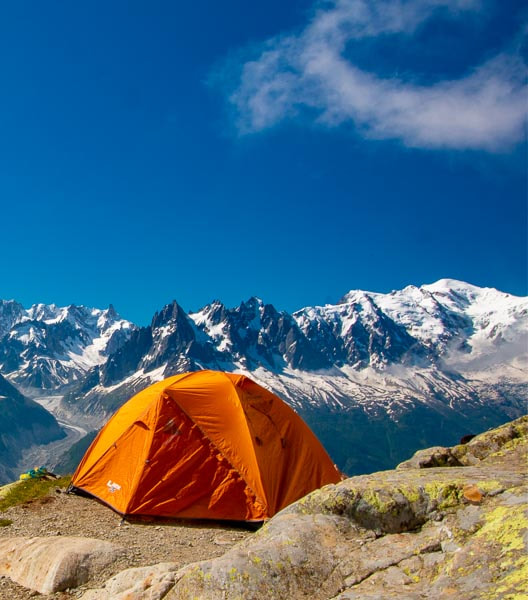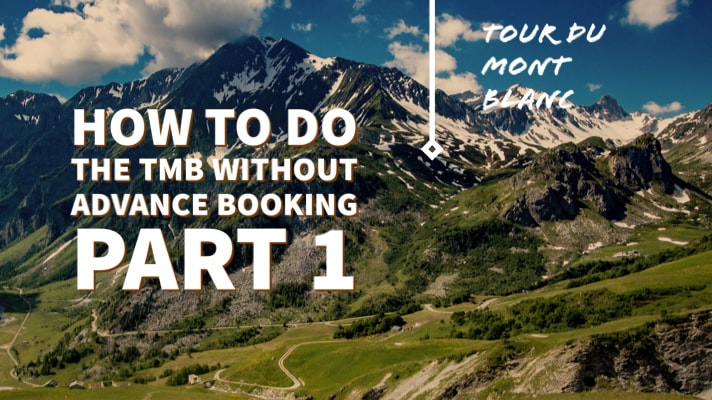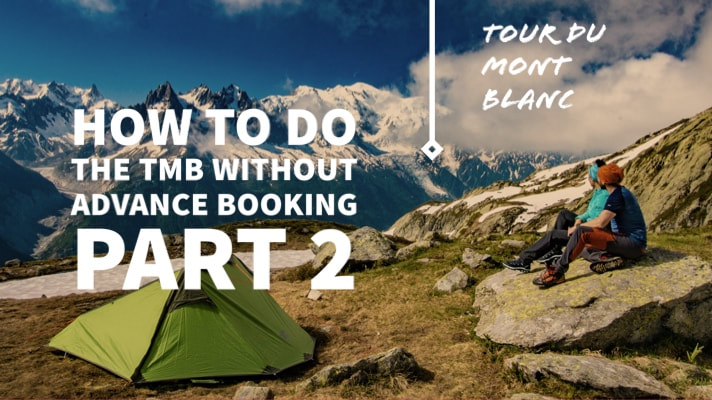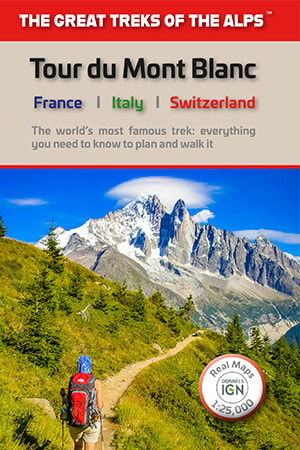I am not going to get into the kit list today: I will cover that in a future post. But I will say that there is a natural tendency to bring too much on your first trek. As your experience grows, the contents of your pack shrink. And it is a process that never stops: after 2 decades of Alpine trekking, I am still finding ways to reduce my load. The less you bring, the smaller pack size you can use. And the smaller the pack size, the lighter your load. And that brings me neatly to weight.....
Weight Every item in your pack must be carried up and down every rise and fall on the TMB. That is of course obvious but what is less obvious is that your body is accustomed to carrying only its own weight and not heavy packs. As you trek up and down mountains with a heavy pack on your back, your muscles need to adjust to this shock to the system. For many, this adjustment will take place on the TMB itself rather than in training before the trek. And that is tough work. So the lighter you can make your pack, the less stress you place on your body and the more you will enjoy the TMB. An oz here or there seems like a small thing but it all adds up. I will talk about saving weight generally in later posts so here let's concentrate on the weight of the pack itself. Surprisingly, there is a massive weight difference between different packs. Even packs of the same size can vary massively in weight. For years I used a Deuter Guide 35L pack which is a great rucksack: strong and reliable......and very heavy: it weighed 1.6kg which amounted to more than 20% of my total pack weight. At the end of its life, I bought an Osprey Talon 33L which weighs only 0.91kg, a saving of nearly 0.7kg just on one item. Much of the drive for weight saving packs comes from the US where 'through-hikers' on long trails have fuelled the demand for ever lighter gear. In my opinion that Osprey pack is excellent. Packed with features and incredibly light. They also do a 44 litre version which is light too. But other brands make light packs too. Look for the lightest pack you can find that is comfortable for you: they are not always much more expensive. And that brings me to comfort....... Comfort Unfortunately, size and weight are not the end of the matter. One final thing to consider is comfort. Ideally you want a pack with well-padded straps and hip-belt. The latter is the most important as you should carry most of the weight on your hips and not your shoulders. As a general rule of thumb, the lighter the pack the less padding you will get and the less comfortable it will be. But that is only part of the story: I think it is fair to say that the lighter you can make your pack, the less you need thick padding. The Osprey Talon for example saves weight by reducing padding, particularly around the waist area. Some find it uncomfortable but I do not: my pack is light so I do not need very thick padding around the waist. If you carry more then you will probably need more padding. Conclusion There are a lot of confusing variables here so my overall advice is as follows:
If you have any further queries you can ask me questions on our Facebook page "Tour du Mont Blanc Q&A".
2 Comments
Caroline
6/3/2022 16:27:13
As always, great, clear, helpful pointers and reminders, Andrew! Many thanks. You are a tremendous resource for so many of us.
Reply
Your comment will be posted after it is approved.
Leave a Reply. |
Andrew McCluggageblogs about life on the Knife Edge Archives
January 2024
Categories
All
|
|
|
Free UK Delivery
International Delivery also available |
|
|
Company |
Support |
Follow us©Knife Edge Outdoor Guidebooks 2018
|





 RSS Feed
RSS Feed
